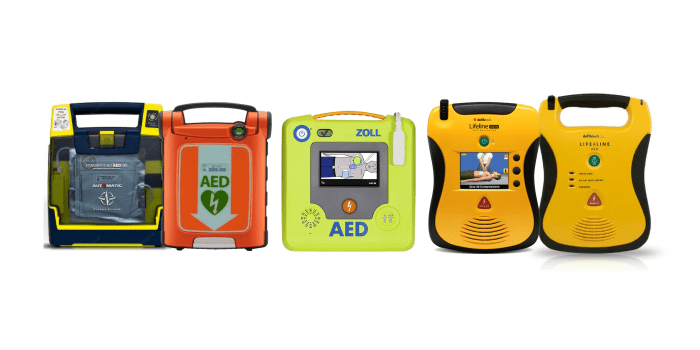Aed’s function with approximately 95 accuracy – AEDs, with their remarkable accuracy of approximately 95%, have revolutionized emergency response and saved countless lives. This comprehensive guide delves into the intricate workings of AEDs, exploring their function, types, placement, and legal implications, empowering individuals to confidently navigate life-threatening cardiac events.
AED Function and Operation

Automated external defibrillators (AEDs) are medical devices designed to deliver an electrical shock to the heart in the event of sudden cardiac arrest (SCA). They analyze the heart’s rhythm and determine if a shock is necessary, making them accessible and effective for use by laypeople in emergency situations.
Using an AED involves a few simple steps: checking for responsiveness, calling for emergency medical services (EMS), and applying the AED pads to the person’s chest. The AED will then analyze the heart rhythm and, if a shock is indicated, deliver it automatically.
Key Components of an AED
| Component | Function |
|---|---|
| Electrodes | Conduct electrical impulses to and from the heart |
| Analyzer | Determines the heart’s rhythm |
| Capacitor | Stores electrical energy for the shock |
| Battery | Powers the AED |
| Voice prompts | Guides the user through the process |
Types of AEDs: Aed’s Function With Approximately 95 Accuracy

There are two main types of AEDs:
- Manual AEDsrequire the user to analyze the heart rhythm and manually deliver the shock if necessary.
- Automated AEDsanalyze the heart rhythm and deliver the shock automatically, making them easier to use for laypeople.
Each type has its advantages and disadvantages. Manual AEDs offer more control over the shock delivery, while automated AEDs are simpler to use and may be more effective in the hands of untrained users.
Examples of AED Models, Aed’s function with approximately 95 accuracy
- Zoll AED Plus: Manual AED with a high energy output
- HeartSine Samaritan PAD: Automated AED with voice prompts
- Philips HeartStart FRx: Automated AED with real-time CPR feedback
Placement and Accessibility of AEDs

AEDs should be placed in high-traffic areas where people are likely to experience SCA, such as:
- Public buildings (e.g., schools, libraries, shopping malls)
- Workplaces
- Sports facilities
- Transportation hubs
The optimal placement of AEDs should be determined based on factors such as:
- Population density
- Proximity to emergency medical services
- Accessibility to laypeople
FAQs
What is the primary function of an AED?
AEDs are designed to analyze heart rhythm and deliver an electrical shock to restore a normal heart rhythm in the event of sudden cardiac arrest.
How do I use an AED?
AEDs are equipped with clear voice instructions that guide users through the steps of attaching the pads, analyzing the heart rhythm, and delivering a shock if necessary.
Where should AEDs be placed?
AEDs should be placed in high-traffic public areas, such as airports, shopping malls, and sports facilities, where they are easily accessible in the event of an emergency.